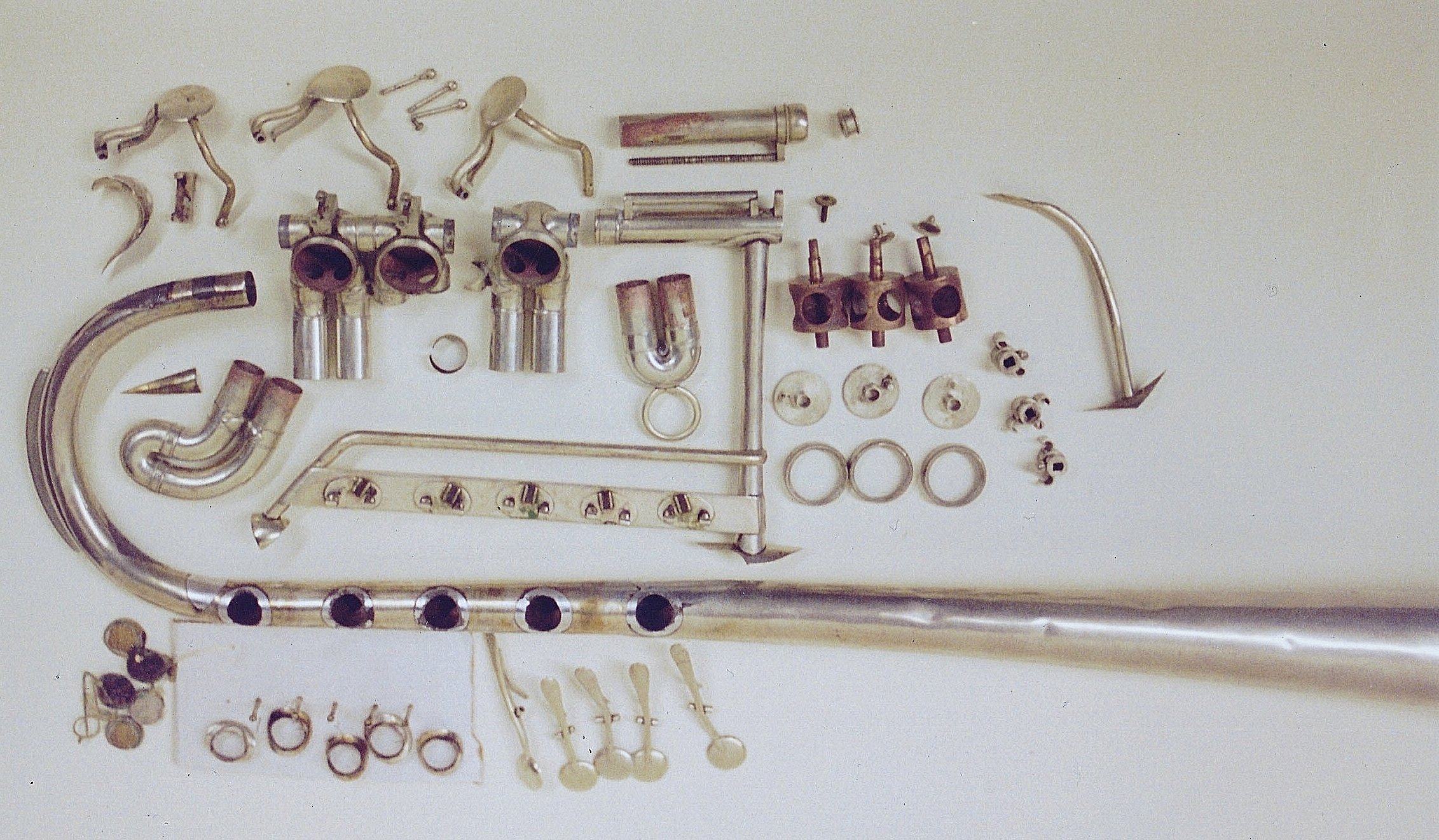Soprano Saxhorn with Valves and Keys by E.G. Wright
Eb soprano valve and keyed bugle made by E.G. Wright about 1853.
For this restoration project, I'm digging into my archive of photographs that were taken before I had a digital camera. The instrument is important enough that I hope that you can excuse the fuzzy images.
I restored this for Joe Utley when he first purchased it in about 1995. Some clearer photos can be seen on the National Music Museum's website. While there were some obvious damage and the second valve slide was missing, the instrument is actually very well preserved and quite a good player.
The instrument before reatoration.
This instrument was made in the early to mid-1850s and exhibits some details not seen in later instruments by Wright. The valve levers have leaf springs and the valve stop mechanism were shared with Graves in these early years, when production numbers were smaller. The lozenge shaped brace flanges later gave way to the much more familiar ovals. Another distinction is the wider saxhorn bell, the same as seen on Mark Elrod's early circular valve bugle that is not seen in Wright's more common instruments made in the 1860s.
During restoration.
During the 1840s and 1850s there was a transition from keyed brass to valved brass instruments and many makers throughout the world were combining the two mechanisms. The most commonly seen in collections is the "clapper key" on English cornopeans that could be used for easy whole step trills. Adolphe Sax added two to five keys on the bells of saxhorns with similar but more complex intentions. Each of these keys generally raised the pitch by a half step in sequence.
In the early 1850s in Boston, E.G. Wright made Eb valve bugles with five keys that had a very different function. These are used to make the highest notes more secure, the same as the last five keys on his 12 keyed Eb bugles. This keyed bugle was the most important solo instrument in the US at the time and Wright had developed them with the intention of virtuoso performances. The players were called on to play highly technical and highly pitched solos and the added security in the high range must have been very desirable. The notes effected were from Ab to high C (as written, transposed for instrument in Eb).
12 keyed bugle by E.G. Wright, also in the Utley Collecton.
Another fascinating bit of evidence that this soprano has given up is that it was originally built in low pitch, probably very close to modern pitch. At some time the mouthpipe was shortened by about 5/8", raising the pitch to about A=448Hz, which is still slightly lower than most band instruments used in the US in the middle to late 19th century. I can only speculate whether it was built to play with earlier, lower pitched European instruments or with piano or organ, which were normally pitched lower. I have found that most keyed bugles that I have restored, including those made in the US, were lower than band pitch. This was a time of transition is a number of ways.
The last photo to the left shows one of two replica Eb sopranos that I had made based on this instrument by E.G. Wright.
Replica based on E.G. Wight’s valve and keyed bugle.







